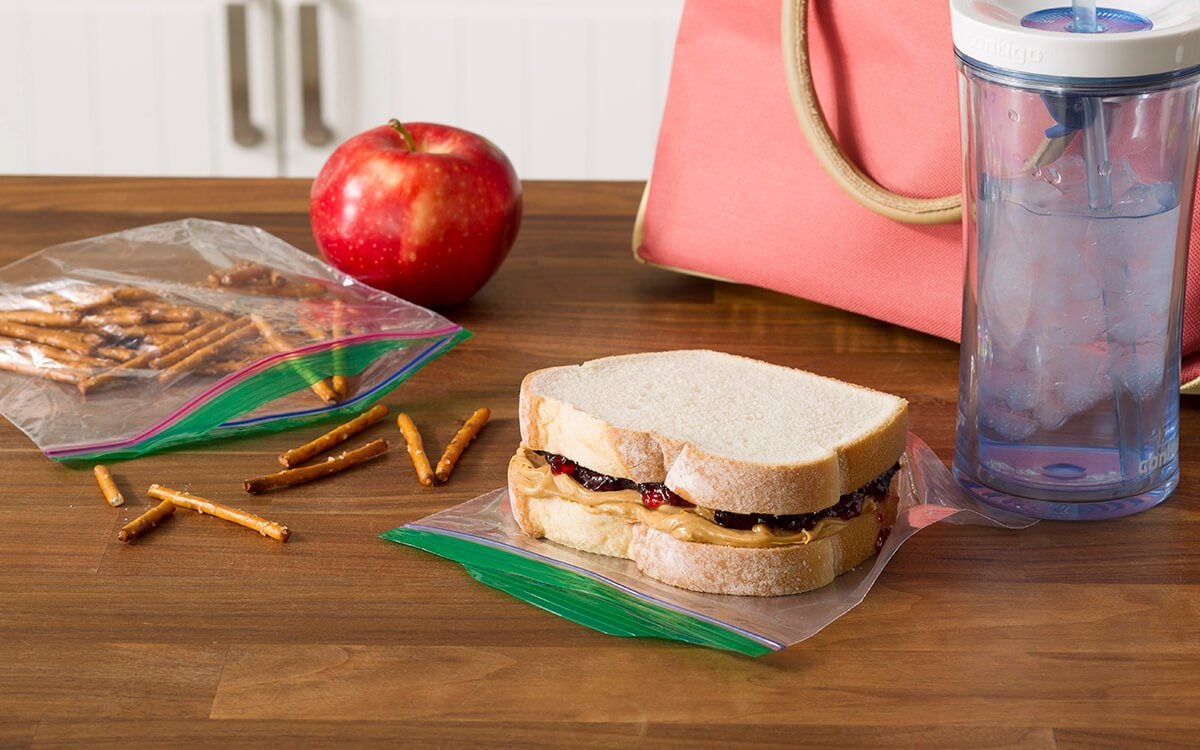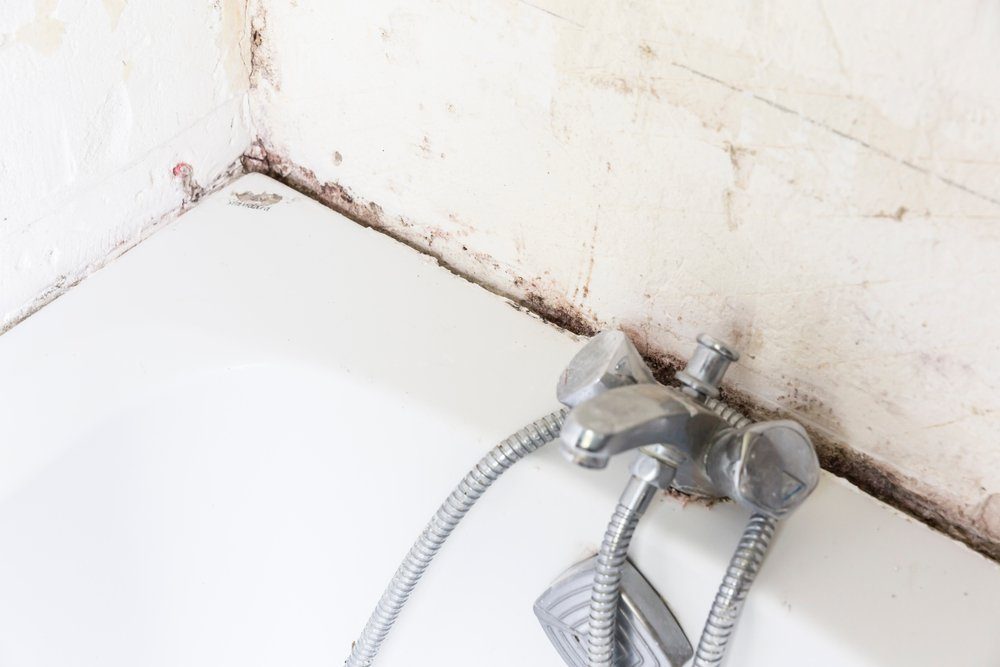
This is the World’s Deadliest Animal
When you think about a deadly animal, you may think shark, lion, or even a rhino. However, according to several studies, the deadliest animal in the world is much smaller and way more irritating. There are more than 100 varieties of this thing, and it feeds on human blood, transporting a vast array of diseases from one person to next. Figure it out, yet? That’s right—that buzzing, easy-to-squish mosquito is the world’s deadliest creature, period.
The numbers don’t lie: According to the World Health Organization, more than 725,000 people worldwide are killed by mosquito-borne diseases each year. These diseases include malaria, dengue fever, yellow fever, and encephalitis. Malaria has the highest mortality rate, killing at least 600,000 people a year. (These are the world’s deadliest diseases, ranked.)
“One of the reasons mosquitoes are the most deadly is that they’re able to adapt easily to new environments,” Burns Blackwell, president and chief executive officer of Terminix-Triad, recently told Accuweather.com.
Another reason the bugs are so deadly is that they breed quickly, Blackwell explains: Mosquitoes have learned to procreate in as little as a few small drops of water, and each female mosquito can produce between 50 and 500 eggs in her first brood. Their populations also peak at different times in different areas all over the world, making it nearly impossible to avoid being bitten. And every bite increases the risk of contracting a serious disease. (Check out these eight common travel illnesses—and how to avoid them.)
In areas where mosquitoes are pervasive and carry deadly diseases, local authorities try to control the population through routine pesticide applications. You can protect yourself by eliminating places where standing water can accumulate (think bird baths, tire swings, poorly draining rain gutters), says Bernard Cohen, MD, professor of dermatology at the Johns Hopkins University School of Medicine. He also stresses that a little protection will go a long way: Wear bug repellent that contains DEET (up to 30 percent) when you head outdoors, and reapply it about every four hours. (You can also try these nine things mosquitoes absolutely hate.)
The next deadliest animal after the mosquito is another one you wouldn’t expect: humans. Around 475,000 people die every year by the hand of another human, which, when you think about it, sadly isn’t that shocking. Finishing out the list of the five deadliest animals in the world are snakes, dogs, and the Tsetse fly.
Coming in much further down on the list are hippopotami (killing around 500 people every year), elephants and lions (around 100 each), and wolves and sharks (around 10 each). These stats are pretty surprising, considering those are the stereotypical animals that people think of when it comes to dangerous species, not a tiny mosquito. Here are seven more animals that are deadlier than sharks.
The moral of the story is to stay safe—the two most deadly creatures on the planet are the ones you can barely see buzzing around you and the ones that you pass on the street every day. Yes, the animal kingdom is a lot more complicated than you think—these are the 12 other “facts” about animals you have all wrong.

Getting the Most From Your Resealable Bags
Between packing lunch for the kids (and maybe yourself) and stashing leftovers, you probably go through a lot of resealable bags during the average week. I couldn’t help but wonder if those plastic bags really have to be thrown away after every use—or if it’s possible to wash and reuse them.
Yes, You Can Reuse Resealable Bags!
The verdict? You can absolutely use resealable bags more than once as long as you wash them properly. One easy way to do that is by sticking them in the dishwasher. Just make sure they are turned inside out so that the soap and water clean the dirty side. Place them on the top rack and run the dishwasher as normal. (And make sure you always add this ingredient to your dishwasher.)
You can also wash your resealable bags by hand. Again, start by turning them inside out. Then use warm, soapy water to clean. It’s important to stay away from super-hot water because that can impact the plastic and increase the chance that BPA chemicals will spread to your food. (That’s just one of 50 reasons you should cut down on plastic.) And make sure you let the bags dry completely to avoid any mold or mildew.
Another thing to keep in mind is that the quality of the bag will affect whether or not you’re able to reuse it. Freezer bags tend to be thicker and sturdier, which makes them better candidates for multiple uses than a regular bag.
But There’s One Exception
If you have used a resealable bag for raw meat (like for marinating fish or just storing extra chicken breasts), do not reuse it. You run the risk of cross-contamination which is a big no-no, so toss those bags in the trash. This also applies to greasy food or food that leaves residue that can’t be removed completely.
By learning how to reuse your resealable bags, you can cut your waste in the kitchen in half (or even more if you’re able to get more than two uses out of a bag) and save money while you save the environment. Just make sure you sanitize first!
Next, find out how to clean a water bottle thoroughly.

This is What Your Mediterranean Diet is Missing
From its heart-healthy benefits to possibly reducing the risk of certain cancers, the Mediterranean diet is one of the most delicious ways to eat your way to good health. And while many of the benefits found in this diet are due to the fact it emphasizes fruit, fresh vegetables, legumes and lean proteins like seafood and poultry, there’s another reason why eating the Mediterranean way is so healthy.
We’ll let you in on the Mediterranean diet’s zero-salt, zero-calorie, zero-fat secret: It’s all about the herbs and spices. (Check out these 10 healing herbs and spices.)
The Most Popular Mediterranean Herbs and Spices
The Mediterranean includes Turkey, Egypt and parts of northwest Africa, along with Spain, southern France, Italy and Greece. That’s a lot of different cuisines to take inspiration from! Many of the herbs and other seasonings that crop up here are familiar to us. We’ve all sprinkled a bit of fresh thyme over a roast or added chopped basil as the finishing touch on a grilled pizza. (Speaking of which, these crazy pizza toppings are worth trying out!) There are a variety of herbs used across the different Mediterranean cuisines.
Here are some of the most popular:
- Basil
- Oregano
- Parsley
- Thyme
- Rosemary
- Sage
- Bay leaf
- Lavender
- Marjoram
- Borage
Don’t forget about herb mixes like herbes de Provence and bouquet garni which are used in dishes across the south of France.
For flavourful spices used to season dishes across the Mediterranean, you’ll want to check out the following:
- Saffron
- Paprika
- Sumac
- Cumin
- Za’atar
- Pepper
- Fennel
- Cinnamon
This is by no means a complete list, but something to get you started.
Stocking these herbs and spices in your pantry is a great way to ramp up the flavour in your cooking without having to rely on salt, butter and heavy sauces. (Psst—here’s the secret ingredient that will pack your dinner with flavour.) They’re perfect for creating quick and healthy dinners to please the whole family.
What’s more, many of them are brimming with antioxidants and have other health-boosting properties. Who could say no to that?
Next, find out which groceries are worth buying organic.

Got a Nagging Cough? Chocolate Might Help!
A nagging, persistent cough can take you down for days—if not weeks. (Here’s when you should start worrying about a cough that won’t go away.) The answer has always been rest, fluids and cough medicine. Fortunately, there’s a new treatment that is even more effective and a lot more enjoyable. The answer to your prayers may be sitting in your pantry.
A recent study conducted by Professor Alyn Morice, a cough expert from Hull University, found that cough sufferers who ate chocolate recovered faster than those taking traditional cough medicine!
Wait—How Does That Even Work?
Researchers split the 163 participants into two groups and administered either traditional cough medicine or medicine containing cocoa. The chocolate group reported significant improvement in their coughs after just two days.
So how does chocolate help a cough? First, chocolate itself is more sticky than traditional cough syrup. That means that it’s better at coating your throat, preventing irritation that causes you to cough. When the nerve endings in our throat become hypersensitive from a cold or the flu, it causes us to cough and spread the illness. Because chocolate is thick and sticky like honey, it calms down the nerves and quickly soothes a cough.
Chocolate may be the perfect cough medicine, because in addition to its perfect consistency, it contains compounds that have other health benefits, too. Here are 16 more classic home remedies with surprising health benefits.
Ready to Try It?
Before you run to the store and stock up in the candy aisle, it’s important to note that not all chocolate is created equal. Sipping a mug of hot cocoa sounds soothing, but won’t actually help your cough. The research indicates that cough medicine with cocoa is the most helpful, but until that’s readily available, try slowly sucking on a piece of quality dark chocolate. This will allow the delicious candy to coat your throat and give you fast coughing relief.
Here are four more natural cough remedies that provide instant relief.

Social media and the royal family
In a perfect world, people would follow, like, and tweet, with the likes of Queen Elizabeth II, Prince William, Meghan Markle, and the rest of the royal family. Who wouldn’t want to go behind-the-scenes at Kensington Palace? The family, however, only officially uses three social media accounts: @TheRoyalFamily (for all working members of the royal family), @ClarenceHouse (for the Prince of Wales and the Duchess of Cornwall), and @KensingtonRoyal (for the Duke and Duchess of Cambridge and the Duke and Duchess of Sussex). It’s worth noting that the office of Prince Andrew, Duke of York shares updates about his work on @hrhthedukeofyork as well. Although they all have frequent updates, they aren’t the same as having a personal social media account—and only two royals officially do.
The only royal who has an official, verified, public Instagram account is Princess Eugenie, The Cut reports. The princess and her sister Princess Beatrice are exceptions to the no personal social media rule because they aren’t “working royals.” This means they don’t perform official royal duties or make official appearances on behalf of the family. Although both the princesses attend some royal events, they participate as guests who also have their own careers. (Here are 14 other things you didn’t know about Princess Eugenie.)
Princess Beatrice works in finance, and Princess Eugenie is an art director. Neither are on the official royal website, which only lists working royals. So both princesses are free to post what they want, without an official filter or account management from the royal family. Princess Eugenie likes posting about her family and charity work on Instagram. Princess Beatrice prefers Twitter and tweets most of the same.
Although many people look at every royal as a celebrity, they are technically working. That’s why working royals need a filter to preserve their image and reflect that of the royal family. Running your own personal social media account would make that hard to do and open royals up to more scrutiny. There are some unverified reports that certain royals might have secret social accounts including Queen Elizabeth II, Kate Middleton, and Prince Harry.
Next, check out these 50 other things you didn’t know about the royal family.

These are the Safest—and Most Dangerous—Days to Drive in Canada
A recent Allstate Canada Safe Driving Study sheds some fascinating light on the driving habits of Canadians—including the most dangerous day of the week to drive. For 10 years running, the survey—which involved an in-depth analysis of Allstate Canada’s collision claims from 2008 to 2018—found that there were more collisions reported on Fridays than any other day of the week. Conversely, the safest day of the week to drive tends to be Sunday.
The single most dangerous days to drive in the entire calendar year, however, are the days leading up to Christmas, with Ontarians making the most collision claims on December 21, and Alberta and New Brunswick following suit on December 23. (Don’t miss these essential tips for a safe winter road trip.)
Across the board, Christmas Day itself is the safest day to be on the road, with the least number of collisions reported.
The study also revealed the following, based on claims reported in the last decade:
The safest community to drive in Canada: Hanmer, Ontario
The most dangerous community to drive in Canada: North York, Ontario
The community with the greatest increase in claims over 10 years: TIE — Kitchener, Ontario, and Brantford, Ontario (both +67%)
The community with the greatest decrease in claims over 10 years: Spruce Grove, Alberta (-27%)
The top five types of collision reported across Canada in 2018:
1. Rear ended (Here’s why you should never follow a friend while driving.)
2. Turning & intersections
3. Parked vehicle
4. Lane change
5. Stationary object or ditch
Next, check out the most bizarre car insurance claims ever filed!

In Conversation With Jennifer Whalen of CBC’s Baroness von Sketch Show
Reader’s Digest Canada: Your show is a sketch-comedy series starring four female comedians over 40—a double rarity. Given our cultural obsession with youth, how big of a deal is this?
Jennifer Whalen: It’s huge. For a woman, you have this idea when you’re young that you can be whatever you want. But then puberty hits and you realize that a lot of your value is tied to what you look like. As you get older, that calms down, but then you don’t have a place in our society anymore. It’s such a waste. The minute I hit 40, I was just a smarter, better version of myself. There’s also the fact that some men don’t see women as fully human, and here’s a show where women are fully realized people with their own agendas. I think that’s important.
What does each of the Baronesses bring to the group that’s unique?
We all come with a slightly different point of view: Meredith is a single mom; Aurora has a partner and an eight-year-old; Carolyn is living the fabulous queer life; and I have a partner and a stepson. It’s like a band where we each play our own instrument, but then when we come together, the sound is greater than our individual parts.
What’s an example of a sketch that is “so Jenn”?
There’s one based on how I had gone out and bought a bunch of new summer dresses. Any time someone would compliment me, I would say, “Thanks. And it’s got pockets.” One of our writers wrote something about that and then, later, I was out shopping with Aurora and I actually said the line. She was like, “You know you just did a sketch about that.”
Have you always been funny? Did you grow up making everyone around you laugh?
At home, yes, but I was very shy at school. I was never the class clown. I was the kid who sat next to that kid and got them to say something that would get them a big laugh and then get them in trouble and moved to another seat. I used a rotating cast of kids so my teachers never realized it was me. (Wish you could master the art of telling a joke? Check out these tips on how to be a funnier person.)
The last couple of years have been doozies in terms of depressing headlines. Does something like a Trump presidency or all the #MeToo stories make it easier or harder to be funny?
I would say that it just informs what we talk about—because of a movement like #MeToo, we can touch on difficult things. In Season 3, we had a sketch that Meredith wrote about the backlog of untested rape kits, which was an issue written about in The Globe and Mail. That’s a tricky topic to make funny, but because we’re all having those conversations, it gives us permission to go there.
Vogue called the Baronesses the “best thing to come out of Canada since Ryan Gosling.” How did that feel?
That was pretty exciting. Ryan, if you’re reading this, come and do the show. We have this sketch called “Middle-Aged Lady Make-Out Pile.” How can you say no?
The Baroness von Sketch Show airs on CBC.
Can’t get enough Canadian humour? Don’t miss our chats with Dan Levy, Paul Sun-Hyung Lee and Rick Mercer.

The bathtub is one dirty place…
When you go into the bathroom, it’s expected that you’re going to clean up in some way. Either in the bathtub, brush your teeth, or even after using the loo, you keep up with your basic hygiene in this room. But although you’re getting clean in the bathroom, that doesn’t mean the bathroom is completely clean with you. In fact, it can be infested with all kinds of germs.
One of the dirtiest places, of course, is the bathtub. It’s where you go to clean your body of any extra germs or grime that you’ve dealt with during the day. Although we would like to believe that the germs magically wash down the drain with the water and leave the bathtub sparkly clean, that’s obviously not the case. Bacteria can easily build up, especially on your shower curtain. (Watch out for these 15 everyday items that are dirtier than a toilet seat.)
In a study done by the American Society for Microbiology, it was revealed through testing that the biofilms (aka, what you may call “soap scum”) on the shower curtain even after a week of use hold an extensive amount of microorganisms, including Sphingomonas and Methylobacterium. These bacteria can be especially hazardous for immune-compromised patients and could be the cause of numerous issues including urinary tract infections, pneumonia, skin ulcers, and much more.
However, a regular cleaning practice will lower the risk of catching any of these diseases. In an interview with WebMD, Philip M. Tierno, Jr., PhD and clinical professor in the Department of Pathology at New York University, says that cleaning regularly and keeping up with basic hygiene will reduce the risk of getting sick from your bathroom. Only one to two per cent of all germs are pathogenic, so even though there’s a possibility of catching something, the risk is very low (if you’re keeping yourself, and the bathroom, clean).
You should disinfect weekly
It’s recommended to disinfect the bathtub (and shower curtain!) weekly, and deep clean it monthly. (Here are 20 things you should be cleaning with a toothbrush.)
Dan Allen, M.D., of Cleveland Clinic, has quite a few recommendations when keeping your bathroom clean—including your shower. He recommends running the shower curtain through a hot cycle in the washing machine. In between uses, it’s best to leave the curtain closed after taking a shower, to let the curtain dry out.
Other sneaky items associated with your bathtub are also swimming in germs. For example, your loofa holds quite a bit of moisture, which can breed bacteria from the skin, and promote fungus and mould buildup. He says to throw it out monthly.
As for the rest of your bathroom, it’s important to give it a scrub on a regular basis as well. This is especially true if you flush with the toilet lid open—which can cause microbes full of infectious diseases to spray around your bathroom. If you don’t disinfect your bathroom, those pathogens could be living on your surface for weeks or even months at a time. (Here’s more on why you should always close the toilet lid when you flush.)
Now the bathtub and the toilet aren’t the only places infested with bacteria. According to WebMD, bathrooms can be the home of many other harmful germs that can live in various nooks and crannies. Some of these germs include gastrointestinal viruses which contains norovirus and other stomach ailments. Enteric pathogens (which comes from contaminated foods, and return, feces) which includes E.coli, salmonella, shigella, and campylobacter. There are also skin and respiratory organisms such as the “staph” bacteria (staphylococcus aureus), which causes serious skin infections. Dermatophitic fungi including “athlete’s foot,” which comes from walking barefoot on a contaminated floor. There’s also a slew of other residual fungi, such as mould and mildew, which can aggravate asthma and allergy symptoms.
Again, if you keep a regular practice of cleaning the bathroom, the likelihood of these germs truly affecting you is very minimal. However, it’s important to note the proper ways to clean your bathroom. Because if you’re not properly cleaning it, the changes of getting sick obviously increase.
Next, check out these six bathroom renovation tips from the experts.

Do you have enough fibre in your diet?
Fibre has a reputation for being a key part of a healthy diet. Health Canada recommends 25 grams of fibre per day for women and 38 grams of fibre per day for men—on average, Canadians are eating only half of that. Although it’s safe to say most people could include more fibre in their diet, a research review shows there’s an ideal amount for reaping health benefits.
The World Health Organization (WHO) analyzed 40 years worth of research to help develop new dietary guidelines for fibre. The study, published in the journal The Lancet, also looks at which types of carbs ward off weight gain and protect against chronic diseases. The researchers looked at 185 studies and 58 clinical trials conducted over 40 years. They found 25 to 29 grams of fibre is ideal for health benefits. (Try out these 30 painless ways to increase dietary fibre.)
The WHO research found that people eating the most fibre in their diet are 15 to 30 per cent less likely to die prematurely from any cause in comparison to those consuming less fibre. Similarly, eating fibre-rich foods coincides with a 16 to 24 per cent less chance of coronary heart disease, stroke, type 2 diabetes, and colon cancer. According to Nesochi Okeke-Igbokwe, MD, a physician and health expert, the research supports and reinforces what has already been known about fibre for so long in regards to its health properties.
So while you should probably be eating more fibre, the next challenge for the public is finding ways to so, Dr. Okeke-Igokwe says. Not everyone is aware of the best options. First, it’s important to know that there are two main types of fibre—soluble and insoluble—and both are essential for your health. Soluble fibre is in foods like oat bran, barley, nuts, seeds, beans, lentils, and some fruits and vegetables and it helps slow digestion. Insoluble fibre is in foods such as wheat bran, vegetables, and whole grains and it helps food pass through your system more quickly. (Here are seven surefire ways to keep your bowels running smoothly.)
The more processing a food has, the less fibre it typically has, according to the Academy of Nutrition and Dietetics. For example, a medium apple with the peel has four and a half grams of fibre, but half a cup of apple sauce only has one and a half grams. It’s something to keep in mind to help reach your fibre goals. A person would have to eat five large apples, or two cups of peanuts, or three and a half cups of shredded coconut to hit the 25-gram mark. The Academy’s other suggestions for hitting your daily fibre intake include swapping refined grains or cereals for steel cut oats or swapping white rice for brown or whole grain options. You can also add to your diet as well as make substitutions. Some foods that are naturally high in fibre are pears with the skin on, fresh raspberries, avocado, almonds, black beans, and air-popped popcorn. Luckily, you can find fibre in other various food combinations, too.
Next, check out these 10 easy ways to improve gut health!

Does your hotel room have bed bugs?
You don’t have to make the bed. You can get fresh towels every day. There’s no need to set your alarm. When you check into a hotel room on vacation, you don’t have a care in the world—well, except for bed bugs. Nothing can turn a relaxing vacation into a traveller’s nightmare quite like sharing the bed with creepy crawlers. (Never do these six things on your vacation—ever.)
And bed bugs can run rampant in any hotel room, regardless of location or price. “Bed bugs don’t care about socioeconomic status—they just want a warm food source,” Ken Unger, the president of New York-based Suburban Pest Control, told RD.com. “Even the nicest hotels can have a case of bed bugs.”
Thankfully, pest control experts Rentokil.com have a comprehensive guide to checking your hotel room for bed bugs. The most obvious place to find bed bugs is—you guessed it—the bed. Start by searching along the mattress seams, as well as under the mattress. The frame’s joints, crevices, and slats could provide an ideal place for bed bugs to hide, too. Similarly, bed bugs find cozy nesting places along the seams, inside the covers, and around the zips of sofas and chairs, too. Bed bugs can also hang out in rather unlikely places, including cupboards, nightstands, and luggage. Before you start checking, make sure you know what bed bugs look like!
As you search, keep an eye out for other warning signs that aren’t the bugs themselves. Anything from shed skin to blood smears to small black marks might signal a bed bug infestation. If you think your place has bed bugs, report it to the hotel staff immediately and request a change of rooms—but avoid getting swapped directly beside, above, or below the infested room, as it’s likely that the bed bugs could spread. And you should advise the hotel to seek professional bed bug treatment.
But there are also measures you can take to minimize your chances of encountering bed bugs in the first place. Inspecting every inch of your bed for bugs is one thing, but there’s an easy way spot major red flags even before you book. Sure, you could scan through reviews of each hotel in search of bed bug complaints, but there’s a faster way you’ll want to try instead. Bedbugreports.com compiles bed bug complaints into one handy guide. Just select the province and city you’re visiting, and the site will call up a list of hotels that guests have called out for bed bug sightings. If you find a recent complaint, stay far, far away.
Even if you don’t see your hotel on the list, you should still give your room a thorough check before getting settled, of course. And if you do spot a pest, do everyone a favour and file your own report on bedbugreports.com.
Next, find out the sneaky way thieves can break into hotel safes!